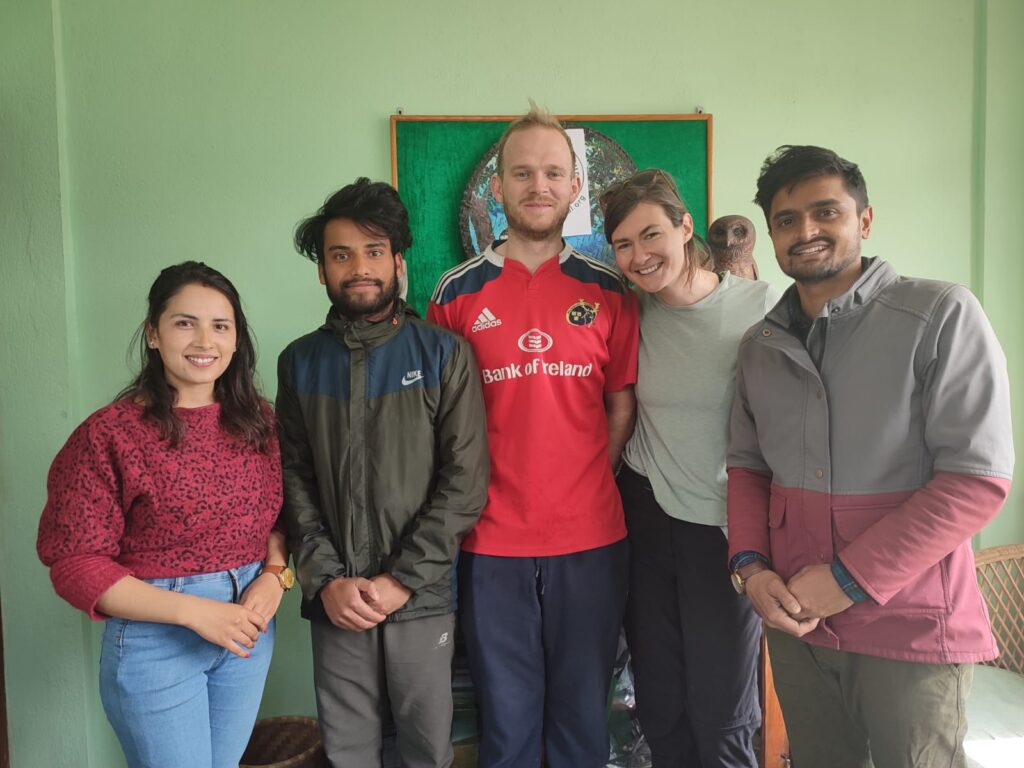Although rather small in size, Nepal is home to an outstanding diversity of plants, animals and ecosystems in a remarkable physical setting. The altitude varies between 60 m ASL in the subtropical Terai Arc to Mount Everest at 8849 metres, the highest point on the earth’s surface, at the southern corner of the Tibetan plateau, all within a narrow horizontal distance of about 200 km. Within this range and diverse habitats, Nepal hosts almost 12,000 different species of flora, iconic animals such as the snow leopard, clouded leopard, bengal tiger, one-horned rhino, asian elephant, red panda and the pangolin. These natural qualities truly make Nepal one of the most unique nations of the world. But what about those species and areas which don’t make the spotlight? Friends of Nature Nepal, a small team of passionate conservationists has been venturing into uncharted territories, rediscovering long-unrecorded species and stands up for the protection of many underrepresented or neglected species.
Conservation successes in Nepal
Nepal has made it into global news with its successful nature conservation efforts. More than 3.4 million hectares of the country, equaling 23% of the land, is under protection. Besides protected areas, various schemes of forest management have been put in place through the provision of national forests (community forests, collaborative forests, government managed forests, leasehold forests, protected forests, and religious forests) and private forests. Thanks to that, between 1992 and 2016, Nepal managed to almost double its forest cover from 26% to 45%. Several species received conservation attention, slowly rescuing them from the brink of extinction, and the collaboration between governmental agencies, local NGOs, international NGOs and local communities has made Nepal an admirable example of wildlife conservation.
The wilderness of Nepal
Everest, Annapurna and Langtang are the world’s most famous trekking destinations and attract millions of tourists every year. Consequently, tourism infrastructure development and road construction works are on their way to make these areas more accessible. Meanwhile, many other parts of Nepal remain almost completely inaccessible, and safeguard pristine biodiversity, little known species as well as ancient cultures and traditions of local communities. Bikash Ghimire, director of Friends of Nature Nepal tells us about the Ramaroshan area in western Nepal, which the organisation´s team recently visited for biodiversity profiling.
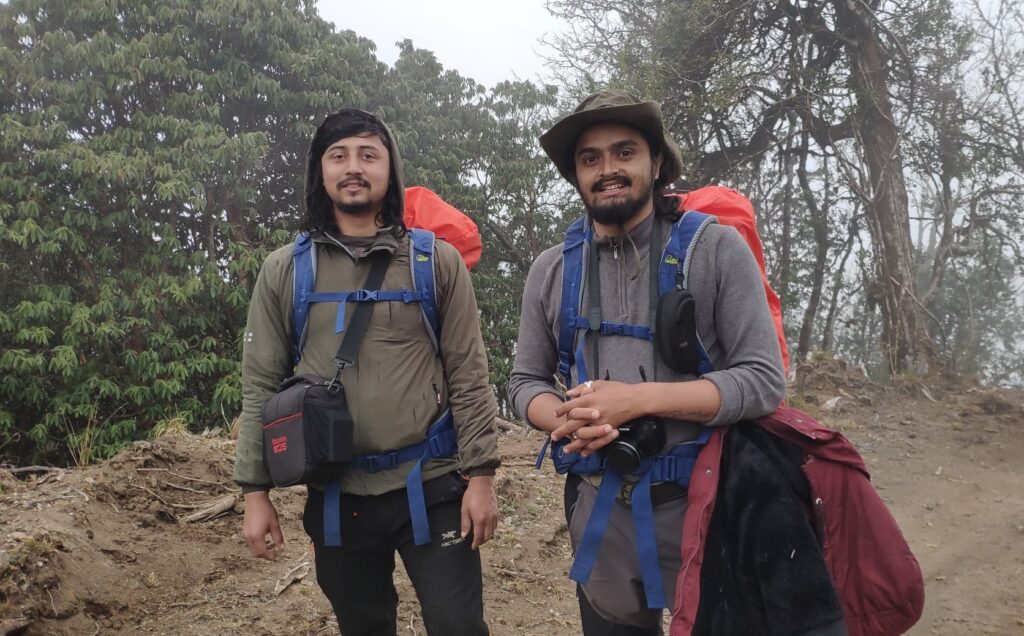
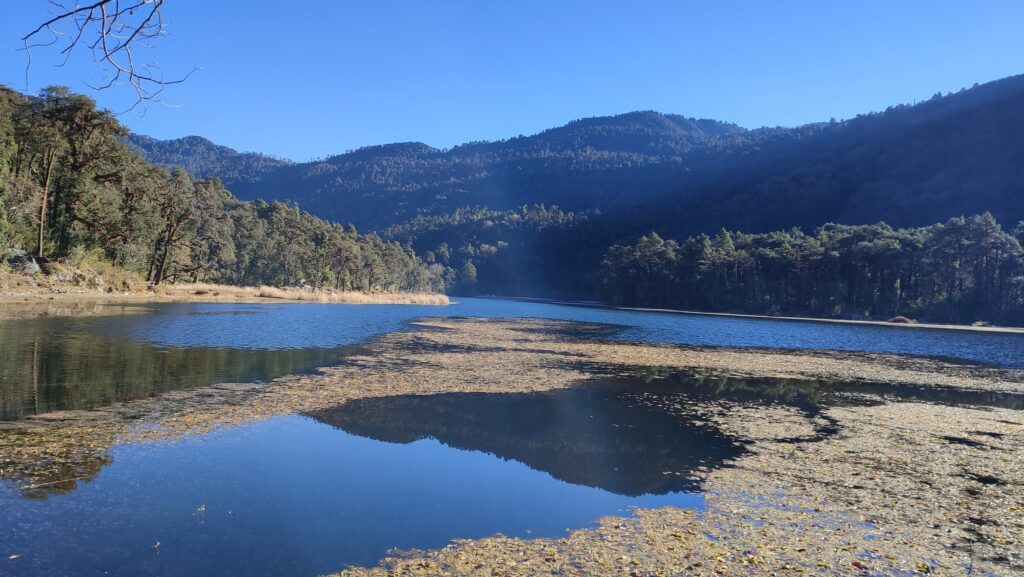
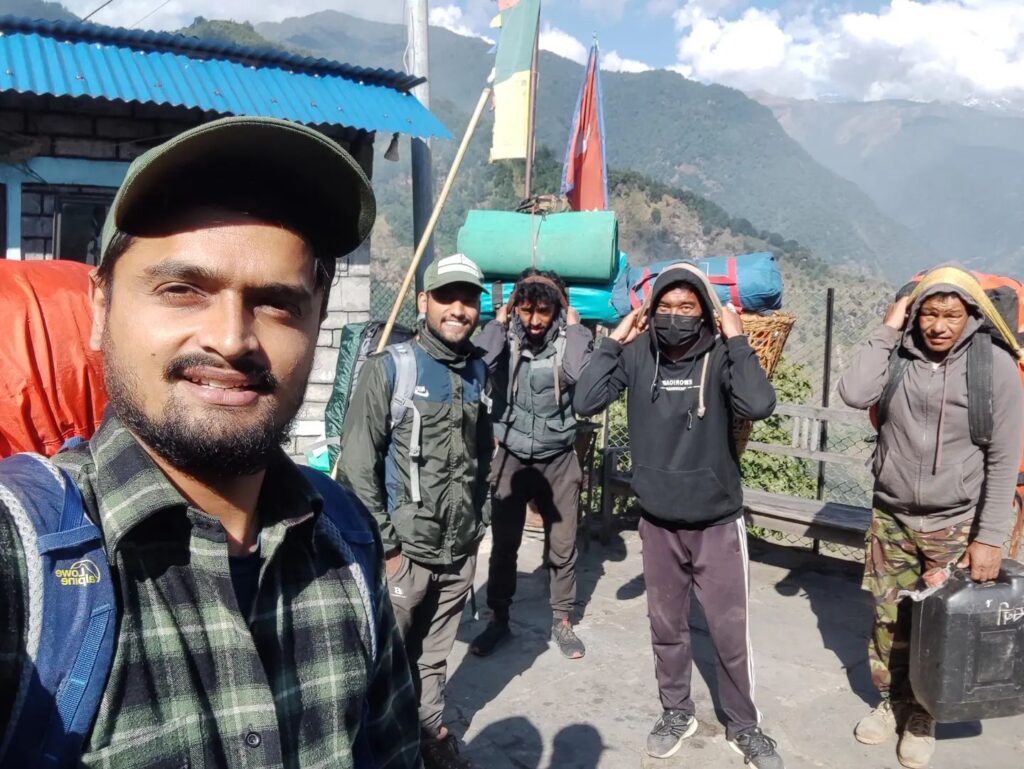
Bikash Ghimire and Suman Sapkota are part of the expedition team that is implementing “Detailed assessment of biodiversity, threat, and Human-wildlife conflict in Ramaroshan Lake Complex, Far-western Nepal”. These expeditions are very demanding and attempts to collect samples can often be hindered by bad weather, such as rainfall or snowfall. (Photos: FON Nepal)
“The Ramaroshan lake complex is one of those places in far western mid hills region of Nepal where, due to its remoteness, and other reasons associated with project cost, detailed biodiversity assessment projects haven’t been conducted before. It takes multiple days to get there from Kathmandu, supplies including food must be carried throughout the whole expedition, as local communities live there very frugally. Combined with the harshness of the terrain, no organization has ventured there before to conduct detailed biodiversity assessment. We installed 57 camera traps, and conducted bird, vegetation, and household surveys, and we are now in the process of analyzing the data we gathered. We are very excited to see the camera trapped images and develop future plan to conserve biodiversity of the region.”
Bikash Ghimire, director of Friends of Nature Nepal
Determination leads to new discoveries
The small team of Friends of Nature Nepal (FON Nepal) is a youth-led non-governmental organisation that has been working in the field of environmental and biodiversity conservation across Nepal since 2001. Throughout this time, they have been conducting research and conservation of Asiatic wild dogs, Himalayan black bears, wolves, clouded leopards, and owls in various parts of Nepal. Their conservation approach is largely focused on community engagement.
“In all our projects, we are aiming to upgrade the technical capacity of local communities. We conduct multi-stakeholder meetings and seek collaborations. Local communities should benefit from conservation,”
explains Bikash.

In a recent project, called ‘Protect the Clouded Leopard’, the team targeted the Lower Annapurna Conservation Area to protect the habitat of the globally threatened clouded leopard. There, almost 800 households depend heavily on local forests for harvesting timber, fuelwood, livestock herding, and also illegal hunting for bushmeat. This has led to the degradation of the forest, increasing forest fires, human-wildlife conflict and resulting retaliatory killings. Only training and capacity building of all locals from young to old can create awareness that will last. From wildlife monitoring to training on how to run a local business and giving out fire fighting equipment, the FON team plants the seeds of environmental awareness and sustainable development into the region.
This direct, on-the-ground approach in neglected regions brings the FON team many new discoveries. “The Asiatic wild dog was considered extinct from mid-hill regions of Central Nepal, but we managed to capture one individual on our camera conducted in collaboration with the National Trust for Nature Conservation – Annapurna Conservation Area Project and Department of National Parks and Wildlife Conservation. Our camera trapping activities are targeted especially for Clouded Leopard and Asiatic Wild Dogs in Lower Annapurna Conservation Area,” tells Bikash. The FON Nepal team were also the ones that rediscovered wild yaks in Nepal, and while looking for the Binturong (also known as the bearcat), they rediscovered the Asiatic Golden Cat after 170 years.
Friends of the owls
Nepal is home to 10% of the world’s owl population divided across 23 species. Owls are also a frequent topic of conversation among local communities, as they are an integral part of traditions and religion. In Hinduism, the owl is regarded as the mount of goddess Lakshmi, but owls are also mentioned in the Bible and the Quran. Despite their importance however, they face numerous conservation challenges.
Every year, owls are illegally trafficked from Nepal to countries like India and China. Owls are typically exported alive, unlike other wild animals, of which only parts are traded. In fact, each year about 2000 owls are being smuggled abroad from Nepal. Additionally, owls are captured to be kept at home for entertainment. Meanwhile, the destruction of their habitat and forest fires as well as the harmful usage of pesticides have had a severe impact on their status in the wild.
Although owls in Nepal have been researched for over 200 years, targeted owl conservation efforts started only 15 years ago. Research and conservation efforts have lagged behind as there has been a lack of concern for their conservation in Nepal and beyond. Instead, people prioritise iconic species such as tigers, elephants, bears and rhinos, as it is much easier to get funding and public support for their protection. While the government of Nepal finally published a 10-year action plan for owl conservation, it has not yet been sufficiently implemented according to FON Nepal.
This is why Friends of Nature Nepal puts specific focus on owl conservation. They launched the International Owl festival, which celebrated its 10th anniversary this February. The festival, which is held in Nepal, India, USA and Italy simultaneously aims to highlight the importance of owls for humans and raise awareness about the common threats to their survival, such as illegal wildlife trade as well as deforestation and the cutting down of old-growth trees.

The FON team is passionate about educating communities on various human activities harmful to the natural environment. Although hunting is completely prohibited all across Nepal (there is only one hunting reserve in the country), illegal wildlife trade is still a booming business in the region, especially for traditional Chinese medicine and similarly to India as ingredients in medical remedies. Hence, poaching continues to be a problem, although the government has strict punishments. Poaching on deer results in 1 year of jail time and 50.000 Nepalese rupees (350 Euros) in fines, and poaching of protected animals is punished by up to 15 years in prison and 10 lakh or 1 million rupees (7.000 Euros) in fines.
However, maybe natural developments lead away from poaching anyway. “We have noticed that as a result of the digital revolution, youngsters nowadays are not interested in learning how to hunt. We want to turn this into our favour, and engage them in conservation instead,” notes Bikash. This is why the team launched conservation awareness camps before the annual Nepal Owl festival, eliminating myths and superstition about owls and focusing on their ecological importance instead.
Education of young professionals
The team of FON also takes the future of young professionals seriously. Since 2012, they have held a three-week Wildlife Techniques training for graduates/ post-graduates and amateur wildlife biologists, and so far, a total of 139 individuals have been trained and are doing significantly well in research and conservation sector working with Government, NGOs and INGOs in Nepal. With major objective of building capacity of fresh university graduates and/or budding field biologists, the training program incorporates both theory and practical field-based sessions, facilitated by leading research and conservation experts of the country. After 19 days of training, the trainees work with FON Nepal as interns for six-month period, wherein they develop their individual proposals, conduct small-scale research and conservation projects, develop posters and brochures, and voluntarily assist the organization in the field works whenever necessary. Moreover, FON even organizes trainings for journalists on environmental journalism.
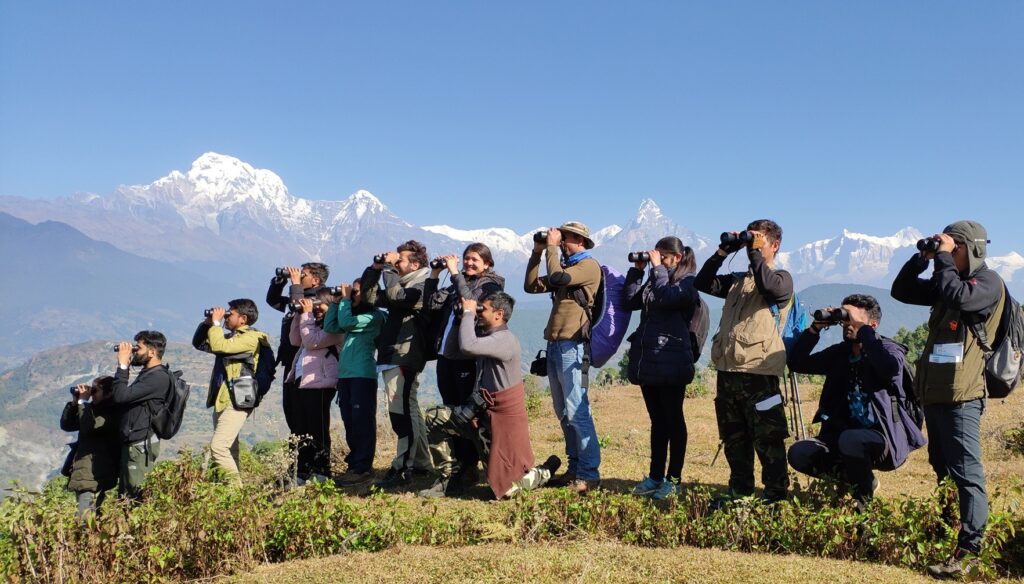

Friends of Nature Nepal have a beautiful message for the world: Don’t let the local communities be isolated from nature conservation, but instead involve them in the effort, train each generation and let them enjoy the benefits of conservation in a sustainable way.
